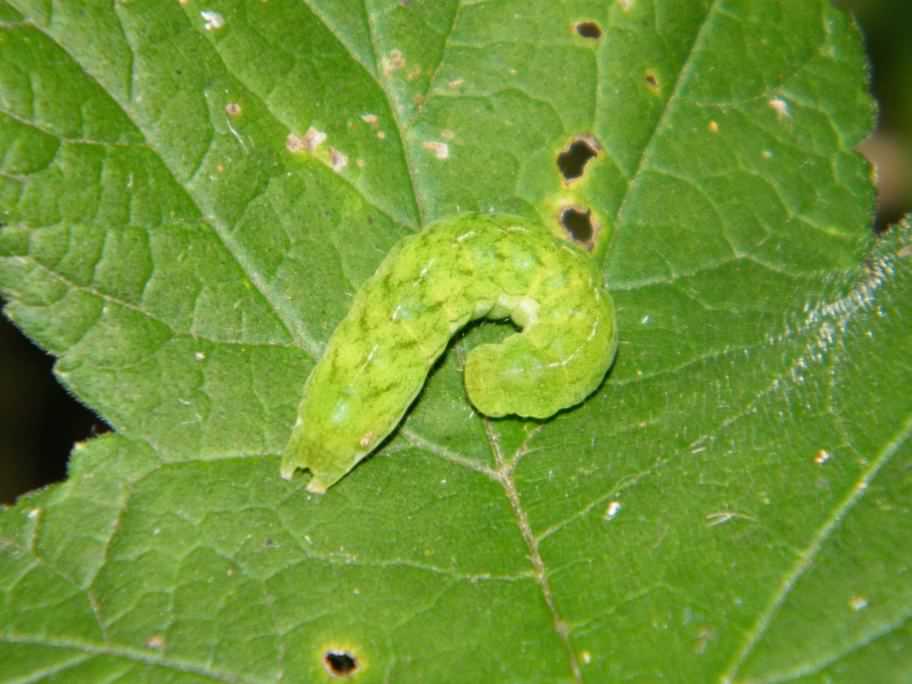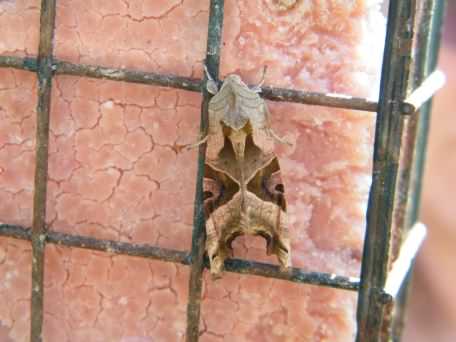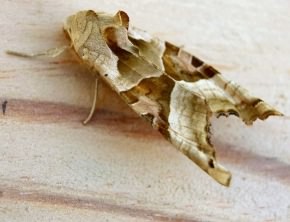


Photo ©2005 Entomart
Click any photo for a larger image
Angle Shades moth - Phlogophora meticulosa
Family - Noctuidae
A highly distinctive moth with a wingspan of 45–50mm (1.8–2in), the Angle Shades moth folds its wings longitudinally when at rest, looking very much like a withered leaf. A commonly occurring moth species throughout Britain especially in the south. Usually seen between May and October in two generations, the species is found in a wide variety of habitats including woodlands, scrubby grassland, fallow fields, meadows, pastures, along roadsides and hedgerows, and in parks and gardens. It is also a common migrant and can occur in large numbers at coastal locations. Usually flying at night it may seen during the day resting on fences and foliage. The Angle Shades is a UK resident but populations enlarge each year with the arrival of immigrants from the continent.
Its common name is derived from the characteristic markings on the forewings where the base colour is pale yellow–brown with a bold V shaped pink and green tinged brown marking. These angular markings along with the folding of the wings provide excellent camouflage against dead foliage and tree bark. They are readily attracted to light sources at night. The hindwings are whitish with darker venation. The larva has two colour forms, green (shown below) or brown, with faint darker chevrons along the back with a feint white striped median line. It feeds on a wide variety of plants and over winters as a larva. Caterpillars feed on a variety of plants all year round and in mild weather throughout the winter, including Nettle, Dock, Bramble, Valerian, Hazel, Birches and Oaks. Early larval instars possess the ability to take on the colour of their food making them less conspicuous to predators.
There is a similar related moth called the Small Angle Shades – Euplexia lucipara.
The Angle Shades is part of the Noctuoidea superfamily which now comprises just over 11,000 species after reorganisation of the some 20,000 species that were originally in the group. Noctuidae are commonly known as Owlet moths, there are however only five Owlet moth species grouped in the Mesogona genus.
Agassiz #73.113, Bradley & Fletcher #2306
 |
 |
 Photo ©2005 Entomart |
| Photos ©2011– Click any photo for a larger image | ||
Site design ©1999– Brickfields Country Park - Privacy -